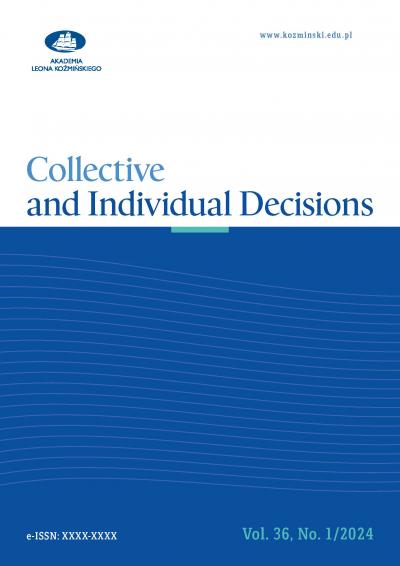Nierówności dochodowe: aksjomaty miar nierówności a opinie ludzi
Barbara Jancewicz
University of Warsaw
06/2016 (25) Decyzje
DOI 10.7206/DEC.1733-0092.69








